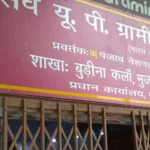Mumbai: The performance of metal companies during the June 2025 quarter revealed a stark contrast between ferrous and non-ferrous producers in India. While ferrous companies enjoyed solid profit growth fuelled by rising domestic prices and declining coking coal costs, non-ferrous players grappled with lower aluminium and zinc prices that have squeezed profitability. This backdrop sets the stage for changes in the metal sector in the upcoming quarters.
Ferrous Producers Thrive Amid Falling Costs
The June 2025 quarter showcased the resilience of ferrous metal producers in India, who reported remarkable profit growth. According to Yes Securities, “Steel producers handled sequentially lower volumes comfortably, aided by firm prices and falling coking coal costs.” These decreasing costs, specifically a fall of $10-15 per tonne in imported coking coal, significantly alleviated financial pressures for these companies. Major players like Tata Steel and JSW Steel reported robust earnings, while SAIL struggled due to adverse inventory drawdowns affecting their margins.
The aggregated earnings before interest, taxes, depreciation, and amortization (EBITDA) for steel companies showcased an impressive Rs 21,000 crore, exceeding market forecasts. Emkay Global Financial Services noted that these firms also benefited from a government’s protective policy—imposing a 12% safeguard duty on select flat steel products, which led to a nearly 29% year-on-year decrease in finished steel imports, totaling 1.4 million metric tonnes for the quarter.
Challenges and Opportunities for Non-Ferrous Firms
In stark contrast, non-ferrous companies, which encompass metals like aluminium, zinc, copper, and lead, had a challenging June quarter. The average London Metal Exchange (LME) aluminium price plummeted by 3% year-on-year and 7% sequentially to $2,444 per tonne, causing revenue declines across the sector. Similarly, alumina prices dropped to $359 per tonne, reflecting a significant decrease of 16% and 31% compared to the previous year and quarter, respectively. Emkay Global Financial Services commented, “The non-ferrous segment posted a soft quarter, as lower aluminium and zinc prices led to a 15.2% sequential EBITDA fall to Rs 20,900 crore in total.”
This downturn in the non-ferrous sector raises concerns, but the silver lining comes from recent trends, as increased prices for zinc and alumina in the June quarter may offer support for improved September quarter earnings for these companies.
Future Demand Trends in the Steel Sector
Despite the strong showing from ferrous producers, the outlook for the steel sector may face hurdles in the coming quarter, primarily due to the disruptions caused by the monsoon season. The construction industry’s slowdown during this time could dampen demand further. Nevertheless, recent actions by domestic steel majors may provide some relief. According to Motilal Oswal Financial Services, hot-rolled and cold-rolled coil prices have already been raised by Rs 1,000-2,000 per tonne for August, driven by the anticipated decline in input costs and the industry’s ongoing attempts to stabilize revenues amidst potential demand fluctuations.
This dynamic illustrates a broader landscape where ferrous metal producers are preparing for potential drawbacks but are also taking proactive measures to boost their profitability.
Case Studies: Impact on Local Businesses
Understanding the ripple effect of these trends on local businesses is essential. For instance, companies in sectors reliant on steel, such as construction and manufacturing, are likely to experience shifts in their operational costs and pricing strategies, thus affecting project timelines and profitability margins. A construction firm in Mumbai might find its costs rising slightly due to increased steel prices, but it could balance this by innovating in material usage or incorporating sustainability practices that may mitigate expenses long-term.
Similarly, local manufacturers of consumer goods made from aluminium may have to rethink their pricing models. With lower prices lingering in the non-ferrous market, they might face squeezing margins but have opportunities to attract cost-conscious consumers seeking budget-friendly options.
In summary, while the ferrous segment rides the wave of soaring profits amidst cost-reduction strategies and protectionist policies, the non-ferrous sector grapples with profit-killing prices. The adage in metal production is that when one sector shines, another may dim, and the Indian economy’s current narrative reflects that well. As the metal industries adjust to the evolving landscape shaped by both local and global factors, stakeholders must navigate these changes wisely to ensure stability and growth across sectors.
Bankerpedia’s Insight💡
The fluctuations in metal prices, particularly the boost for ferrous producers and struggles of non-ferrous companies, highlight the volatile nature of India’s banking and finance sector. Strong performance from steelmakers indicates potential stability for loans tied to this industry, while the weak results for non-ferrous firms could heighten credit risk. Investors should monitor these trends closely. Amidst rising prices and lower input costs, steel companies may remain resilient, but caution is necessary, especially in sectors affected by seasonal fluctuations. Balancing risk and opportunity is essential for informed decision-making.
What Does This Mean for Me?🤔
- Salaried Person → Steel price increases may impact costs for salaried workers.
- Business Owner → Increased steel prices could improve profit margins significantly.
- Student → Steel price changes may affect tuition and living costs.
- Self-employed → Increased material costs may impact profit margins adversely.
- Homemaker → Higher steel prices may increase homemaker expenses for renovations.
- Retiree / Senior Citizen → Steel price stability may benefit retirees’ investments.
- Job Seeker → Increased demand in metals sector may boost job opportunities.
- Farmer / Rural Citizen → Higher steel prices may boost rural infrastructure and earnings.
Research References📚
- economictimes.indiatimes.com
- RBI
- SEBI
- Ministry of Finance
- NABARD
- Department of Financial Services (DFS)
📲 Stay ahead in banking & finance!
Join the Bankerpedia WhatsApp Channel for instant updates, and
subscribe to our YouTube Channel for in-depth analysis and expert explainers.










